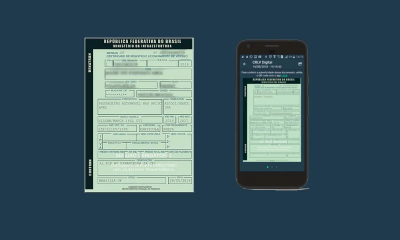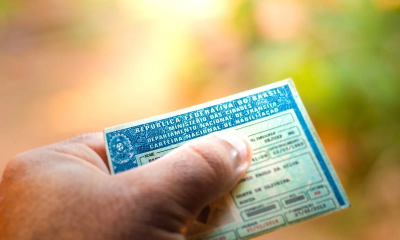Beginner’s Step-by-Step Guide to Customizing Classic Motorcycles
Customizing classic motorcycles is a rewarding hobby that allows enthusiasts to create unique and personalized machines. However, for beginners, the process can be overwhelming and intimidating. That’s why a step-by-step guide can be incredibly helpful in simplifying the process and making it more accessible.

This beginner’s step-by-step guide to customizing classic motorcycles will cover everything from selecting the right motorcycle to restoring and customizing it to your liking. Whether you’re a seasoned mechanic or just starting out, this guide will provide you with the knowledge and skills necessary to create a one-of-a-kind motorcycle that reflects your personality and style.
Restoring and customizing classic motorcycles is not only a fun hobby, but it also allows you to preserve a piece of history and keep these machines on the road for generations to come. With this guide, you’ll be able to restore and customize your classic motorcycle with confidence and pride. So, let’s get started on this exciting journey of classic motorcycle restoration and customization!
Setting Up Your Workshop
When it comes to customizing classic motorcycles, having a well-equipped workshop is essential. This section will guide beginners on how to set up their own workshop for motorcycle customization.
Choosing the Right Tools
Before setting up your workshop, it’s important to have the right tools. The right tools will make the customization process easier and more efficient. Here are some essential tools that you should consider having in your workshop:
- Socket wrench set
- Torque wrench
- Screwdrivers (flathead and Phillips)
- Pliers (needle-nose and slip-joint)
- Wire cutters/strippers
- Allen wrench set
- Hammer
- Bench vise
- Angle grinder
- Welder
- Sandblaster
- Paint sprayer
Organizing Your Space
Once you have your tools, it’s important to organize your workshop space. A well-organized workshop will make it easier to find tools and parts, and will make the customization process more comfortable. Here are some tips for organizing your workshop:
- Use shelves and cabinets to store tools and parts
- Label everything to make it easy to find
- Use a pegboard to hang tools
- Install good lighting to make it easier to see what you’re working on
- Use a comfortable chair or stool to sit on while working
- Install a fan or air conditioning to keep the workshop cool during hot weather
By following these tips, beginners can set up a workshop that is well-equipped and comfortable for customizing classic motorcycles.
Selecting Your Motorcycle
When it comes to customizing classic motorcycles, choosing the right bike is crucial. Here are a few things to keep in mind when selecting your motorcycle:
Evaluating Condition
Before you make a purchase, it’s important to evaluate the condition of the motorcycle. Look for signs of rust, wear and tear, and damage. If you’re not sure what to look for, consider bringing along a knowledgeable friend or mechanic to help you assess the bike.
Understanding Motorcycle Types
Different types of motorcycles have different characteristics that may appeal to you based on your preferences. For example, cruisers are known for their relaxed riding position and low seat height, while sport bikes are designed for speed and agility. Do your research to determine which type of motorcycle is best suited for your needs and preferences.
Setting a Budget
Customizing a motorcycle can be expensive, so it’s important to set a budget before you start shopping. Consider not only the cost of the motorcycle itself, but also the cost of any parts and modifications you plan to make. Remember that the cost of customizing a motorcycle can quickly add up, so be realistic about what you can afford.
Ultimately, the right motorcycle for you will depend on your specific needs and preferences. Consider factors such as the project you have in mind, your budget, the character of the motorcycle, its weight, and the engine type. By taking the time to carefully evaluate your options and choose the right motorcycle, you’ll be well on your way to creating a custom classic that you can be proud of.
The Restoration Process
Restoring a classic motorcycle is a rewarding experience for any beginner. While it may seem daunting at first, breaking down the process into manageable steps can make it much easier. Here are the three key steps to follow in the restoration process:
Dismantling the Bike
The first step in restoring a classic motorcycle is to take it apart. This involves removing all the parts and components from the bike so that they can be assessed and cleaned. It is important to label each part as it is removed so that it can be easily identified when it comes time to reassemble the bike.
Sourcing Parts
Once the bike has been dismantled, the next step is to source the necessary parts. This can be done by searching online for suppliers or by visiting local motorcycle shops. It is important to ensure that the parts purchased are the correct ones for the bike being restored. This includes parts such as brakes, controls, and throttle.
Renovating and Rebuilding
The final step in the restoration process is to renovate and rebuild the bike. This involves cleaning and polishing the parts, repairing any damage, and reassembling the bike. It is important to refer to the labels made during the dismantling process to ensure that all parts are put back in the correct place.
Restoring a classic motorcycle can be a challenging but rewarding experience for beginners. By following these three key steps, dismantling the bike, sourcing parts, and renovating and rebuilding, anyone can successfully restore a classic motorcycle to its former glory.
Sharing Your Progress
Customizing a classic motorcycle is a rewarding project, and sharing your progress with others is a great way to document your journey and engage with communities.
Documenting the Journey
Keeping a record of your customization journey is a great way to look back on your progress and share your experience with others. You can document your journey in a variety of ways, such as taking photos, videos, or writing blog posts.
Posting photos and videos on social media platforms like Facebook, Twitter, and Pinterest is a great way to share your progress with friends and communities. You can also create a blog or website to showcase your work and share your experience with others.
Engaging with Communities
Engaging with communities is a great way to get feedback, learn new techniques, and connect with other motorcycle enthusiasts. There are many online communities and forums where you can share your progress and get advice from experienced customizers.
You can also reach out to local motorcycle clubs and attend events to meet other enthusiasts in person. Services like Meetup can help you find local groups and events to attend.
Overall, sharing your progress is a great way to document your journey and connect with other motorcycle enthusiasts. Whether you choose to document your journey online or in person, engaging with communities can help you learn new techniques and get feedback on your work.
Frequently Asked Questions
What are the first steps in customizing a classic motorcycle for beginners?
The first steps in customizing a classic motorcycle for beginners include determining the type of customization desired, setting a budget, and researching the necessary parts and tools. It’s essential to have a clear idea of what you want to achieve before starting any work on the bike.
What are some budget-friendly ways to refresh the appearance of my vintage bike?
Some budget-friendly ways to refresh the appearance of a vintage bike include painting the gas tank, replacing the handlebars, and changing the seat. These changes can make a significant difference in the bike’s appearance without breaking the bank.
At what age is a motorcycle typically classified as classic or antique for restoration purposes?
Motorcycles are typically classified as classic or antique when they are 25 years or older. However, this can vary depending on the specific model and manufacturer.
Is it possible for a novice to construct a motorcycle from scratch, and if so, how should they start?
It is possible for a novice to construct a motorcycle from scratch, but it requires a great deal of knowledge, skill, and patience. The best way to start is by researching and learning as much as possible about motorcycles and their components before beginning any construction.
What are the essential tools and equipment needed for DIY motorcycle customization?
The essential tools and equipment needed for DIY motorcycle customization include a socket set, screwdrivers, pliers, wrenches, a torque wrench, and a motorcycle lift or jack. It’s also important to have safety equipment, such as gloves and eye protection.
How do I ensure safety and compliance with regulations when customizing an older motorcycle?
To ensure safety and compliance with regulations when customizing an older motorcycle, it’s essential to research and follow all applicable laws and regulations. It’s also important to use high-quality parts and equipment and to have the bike inspected by a professional before riding.
-

 Trânsito1 year ago
Trânsito1 year agoMudança ou Adição de Categoria da CNH: Como Fazer e Quais os Requisitos
-

 Trânsito1 year ago
Trânsito1 year agoCadastro de Instrutor de Trânsito: Como Fazer a Inscrição ou Renovação
-

 Trânsito1 year ago
Trânsito1 year agoCNH Digital: Como Funciona e Quais os Benefícios para os Motoristas
-

 Trânsito1 year ago
Trânsito1 year agoCertidão de Prontuário: Tudo sobre a Documentação do Condutor
-

 Trânsito1 year ago
Trânsito1 year agoAlteração de Dados Cadastrais: Como Atualizar as Informações do Veículo ou do Condutor
-

 Trânsito1 year ago
Trânsito1 year agoPerda ou Roubo da CNH: Como Solicitar a 2ª Via pelo Site do DETRAN
-

 Trânsito1 year ago
Trânsito1 year agoTransferência de Veículo: Como Fazer o Registro em Outro Estado ou Município
-

 Trânsito1 year ago
Trânsito1 year agoCRLV Eletrônico: A Nova Era da Documentação Veicular
